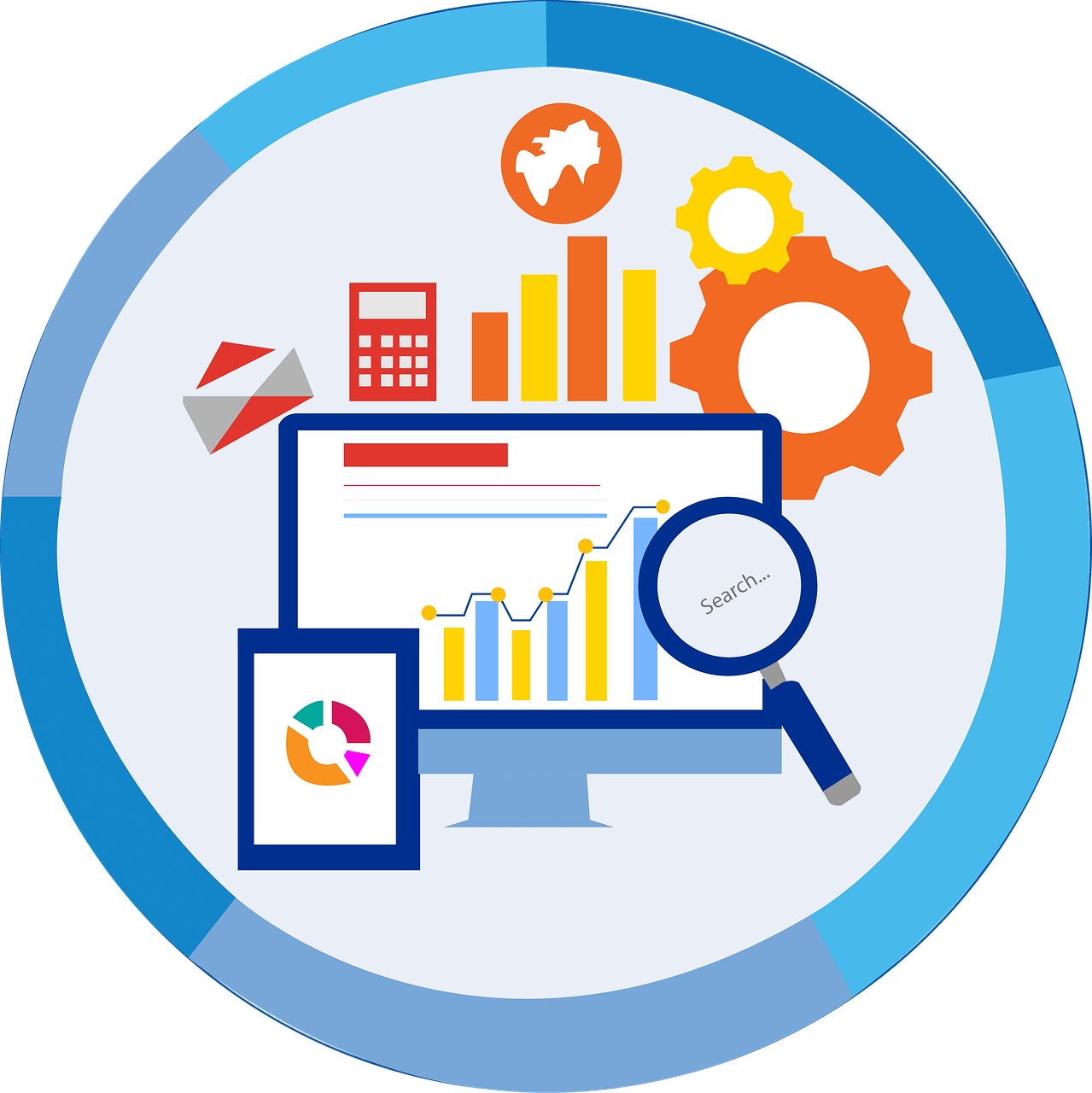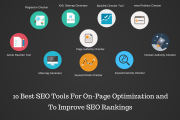How to Use Data Analytics for online Business Growth?
In today's digital age, data analytics has become a powerful tool for online business growth. By harnessing the power of data, businesses can gain valuable insights and make informed decisions that drive success. But how exactly can you utilize data analytics to propel your online business forward? This article will guide you through the key steps.
Firstly, it's crucial to identify your goals and the specific metrics you want to measure. Then, collect and organize your data from various sources such as website analytics, social media platforms, and customer databases. Next, analyze the data to uncover patterns, trends, and customer behaviors for improvement and optimize your marketing strategies.
Finally, use the insights gained from data analytics to make data-driven decisions that enhance customer experience, boost conversions, and ultimately drive growth for your online business.

How to Use Data Analytics for online Business Growth?
Facts about data analytics in business
- 97.2% of businesses are investing in big data and AI and also 95% of companies say that managing unstructured data is a challenge for their industry. (Newgenapps, 2023)
- 62% of retailers report that the use of information and analytics is creating a competitive advantage for their organization. (Keboola, 2023)
- Companies that use data analytics to drive innovation increase their profits by 8%. (BARC, 2023)
- 72% of manufacturing executives say they rely on advanced data to improve productivity. (BCG, 2023)
- By 2025, the market for big data analytics in healthcare might be worth $67.82 billion. (Market Research Future, 2023)
- The average company analyzes 37-40% of its data. (IDC, 2022)
- Data scientists spend about 60% of their time cleaning and preparing data. (Kaggle, 2022)
- The global market for data analytics is expected to reach $103 billion by 2023. (Statista, 2023)
- (Newgenapps, 2023)
- About 47% of McKinsey survey respondents said that the competition in their industry has changed as a result of data analytics, and data science has helped businesses gain a competitive advantage. (McKinsey, 2022)
What is data analytics in business?
Data analytics in business involves examining and interpreting data to uncover insights that inform decision-making, It uses techniques and tools to analyze data from various sources like customer interactions and transactions. The goal is to understand customers, identify trends, and optimize operations, By making data-driven decisions, businesses can gain a competitive edge and drive growth.
Types of data analytics
There are four main types of data analytics:
- Descriptive analytics: This type of analytics focuses on describing what happened in the past. It answers questions like "What are our sales figures for the past quarter?" or "How many customers visited our website last month?" Descriptive analytics is typically used to create reports and dashboards that can help businesses track their progress and identify trends.
- Diagnostic analytics: This type of analytics goes beyond simply describing what happened to identify the root causes of problems or opportunities. It answers questions like "Why did our sales decline in the last quarter?" or "Which customers are most likely to churn?" Diagnostic analytics can help businesses identify areas where they need to improve and make better decisions.
- Predictive analytics: This type of analytics uses historical data to predict what will happen in the future. It answers questions like "How many sales will we make next quarter?" or "Which customers are most likely to purchase our new product?" Predictive analytics can help businesses make better decisions about resource allocation, marketing campaigns, and product development.
- Prescriptive analytics: This type of analytics goes beyond simply predicting what will happen to recommend the best course of action. It answers questions like "What marketing campaigns should we run to increase sales?" or "What product features should we develop to meet customer needs?" Prescriptive analytics can help businesses make more informed and strategic decisions.
Why is data analytics important for online businesses?
Data analytics is crucial for online businesses for several reasons:
1. Customer Understanding: Data analytics helps online businesses gain a deeper understanding of their customers by analyzing their behavior, preferences, and buying patterns. This insight enables businesses to personalize marketing efforts, improve customer experience, and enhance customer satisfaction.
2. Performance Optimization: By analyzing data, online businesses can identify areas of improvement in their website performance, such as page load times, user flow, and conversion rates. This information allows them to optimize their website and user experience to increase engagement and conversions.
3. Market Insights: Data analytics provides online businesses with valuable market insights by tracking trends, monitoring competitor activities, and identifying emerging opportunities. This information helps businesses make informed decisions on product development, pricing strategies, and marketing campaigns.
4. Risk Mitigation: Data analytics helps identify potential risks and fraud in online transactions. By monitoring patterns and anomalies in data, businesses can detect and prevent fraudulent activities, protecting their customers and their reputation.
5. Operational Efficiency: By analyzing data related to inventory management, supply chain, and logistics, online businesses can optimize their operations, reduce costs, and improve overall efficiency.
6. Personalized Recommendation: Data analytics enables online businesses to deliver personalized recommendations to their customers. By analyzing customer data, such as browsing history and purchase behavior, businesses can create personalized product suggestions, tailored marketing campaigns, and targeted promotions. This not only enhances the customer experience but also drives customer loyalty and increases sales.
7. Predictive Analytics: Data analytics allows online businesses to harness the power of predictive analytics. By analyzing historical data and patterns, businesses can make informed predictions about future trends, customer behavior, and market demand. This helps businesses anticipate customer needs, optimize inventory management, and make strategic decisions to stay ahead of the competition.
How can data analytics help online businesses grow?
Data analytics plays a vital role in driving the growth of online businesses. Here are several ways in which data analytics can help businesses grow:
1. Targeted Marketing: By analyzing customer data, businesses can gain insights into customer preferences, interests, and behavior. This information allows businesses to create targeted marketing campaigns that resonate with their audience, resulting in higher engagement and conversions.
2. Conversion Rate Optimization: Data analytics helps businesses identify areas of improvement in their conversion funnels. By analyzing user behavior and identifying bottlenecks or friction points, businesses can optimize their website or app to increase conversion rates and generate more sales.
3. Product Development: By analyzing customer feedback, reviews, and purchasing patterns, businesses can gain insights into customer needs and preferences. This information can be used to develop new products or improve existing ones, ensuring that businesses are offering what their customers want.
4. Pricing Strategy: Data analytics enables businesses to analyze market trends, competitor pricing, and customer behavior to make informed decisions about pricing. By understanding price sensitivity and demand elasticity, businesses can optimize their pricing strategies to maximize revenue and profitability.
5. Customer Retention: Data analytics helps businesses understand customer churn and identify the factors that contribute to it. By analyzing customer behavior, feedback, and satisfaction levels, businesses can implement targeted retention strategies such as personalized offers, loyalty programs, or improved customer support to increase customer retention rates.
6. Market Expansion: Data analytics provides businesses with valuable insights into new market opportunities. By analyzing market trends, customer segments, and competitor activities, businesses can identify untapped markets or niche segments to expand their reach and grow their customer base.
7. Operational Efficiency: Data analytics can optimize operational processes by identifying inefficiencies, streamlining workflows, and reducing costs. By analyzing data related to inventory management, supply chain, and logistics, businesses can improve operational efficiency and allocate resources more effectively.
Benefits of using data analytics for online business growth
The benefits of using data analytics for online business growth are manifold. Here are some key advantages:
1. Improve customer experience: Data analytics allows businesses to gain insights into customer behavior, preferences, and needs. By understanding their audience better, businesses can personalize their offerings, provide targeted recommendations, and enhance the overall customer experience.
2. Increase sales and conversion rates: By analyzing customer data, businesses can identify trends, patterns, and opportunities to optimize their marketing and sales strategies. This leads to more effective targeting, higher engagement, and ultimately, increased sales and conversion rates.
3. Reduce costs: Data analytics helps businesses identify areas of inefficiency and waste. By analyzing operational data, businesses can streamline processes, allocate resources more effectively, and identify cost-saving opportunities, which leads to improved profitability.
4. Make better business decisions: Data analytics provides valuable insights into market trends, customer behavior, and competitor activities. By leveraging this information, businesses can make informed decisions, identify growth opportunities, and mitigate risks, resulting in more successful and strategic business operations.
5. Stay ahead of the competition: In today's competitive landscape, staying ahead is crucial. Data analytics enables businesses to monitor market trends, analyze competitor performance, and identify emerging opportunities. By leveraging these insights, businesses can stay ahead of the competition and maintain a competitive edge.
How to use data analytics for online business growth?
- Set clear goals and objectives - What do you want to achieve with data analytics? Once you know your goals, you can start to identify the key metrics that you need to track.
- Collect data - There are a variety of ways to collect data for your online business. Some common data sources include your website analytics, social media metrics, and customer surveys.
- Clean and prepare the data - Once you have collected your data, you need to clean and prepare it for analysis. This may involve removing duplicates, correcting errors, and consistently formatting the data.
- Analyze the data - There are a variety of data analysis tools and techniques that you can use to analyze your data. The specific tools and techniques that you use will depend on the type of data that you have and the questions that you are trying to answer.
- Visualize the data - Data visualization is a great way to communicate the findings of your data analysis to others. There are a variety of data visualization tools that you can use to create charts, graphs, and other visual representations of your data.
- Act on the insights - Once you have analyzed your data and identified insights, you need to take action on those insights. This may involve making changes to your website, marketing campaigns, or product offerings.

Case studies of online businesses that have used data analytics to grow
Here are some case studies of online businesses that have used data analytics to grow:
Case study 1: Netflix
Netflix is a leading online streaming service that uses data analytics to improve its platform and content offerings. For example, Netflix uses data analytics to:
- Recommend movies and TV shows to users based on their viewing history
- Produce original content that is likely to be popular with users
- Optimize its pricing and marketing strategies
As a result of its data-driven approach, Netflix has been able to grow its subscriber base to over 220 million subscribers worldwide.
Case study 2: Amazon
Amazon is a global e-commerce giant that uses data analytics to improve its customer experience and increase sales. For example, Amazon uses data analytics to:
- Personalize product recommendations
- Optimize its search engine
- Predict customer demand and manage inventory
- Set prices and promotions
As a result of its data-driven approach, Amazon has become the world's largest online retailer.
Case study 3: Airbnb
Airbnb is a leading online platform for booking short-term accommodations. Airbnb uses data analytics to improve its platform and connect hosts with travelers. For example, Airbnb uses data analytics to:
- Recommend properties to travelers based on their preferences and budget
- Predict demand for properties and suggest pricing strategies to hosts
- Identify and prevent fraud
As a result of its data-driven approach, Airbnb has grown into a global business with over 6 million listings in over 100,000 cities worldwide.
Case study 4: Spotify
Spotify is a leading online music streaming service that uses data analytics to improve its platform and playlists. For example, Spotify uses data analytics to:
- Recommend songs and playlists to users based on their listening history
- Create personalized playlists for different moods and activities
- Predict demand for new music and suggest releases to users
As a result of its data-driven approach, Spotify has been able to grow its user base to over 180 million active users worldwide.
These are just a few examples of how online businesses are using data analytics to grow. By using data analytics to improve their products, services, and marketing strategies, businesses can gain a competitive advantage and attract more customers.
Tools for data analytics for business

There are several powerful tools available for data analytics that can help businesses make sense of their data and derive valuable insights. Here are some popular tools for data analytics for business:
1. Tableau: Tableau is a widely used data visualization tool that allows businesses to create interactive and visually appealing dashboards. It enables users to explore and analyze data from multiple sources and gain actionable insights.
2. Google Analytics: Google Analytics is a free web analytics tool that provides businesses with valuable insights about website traffic, user behavior, and conversion rates. It helps businesses understand how users interact with their website and optimize their online presence accordingly.
3. Microsoft Power BI: Power BI is a business intelligence tool that allows businesses to connect, analyze, and visualize their data from various sources. It offers interactive dashboards, reports, and data exploration capabilities, enabling users to gain insights and make data-driven decisions.
4. IBM Watson Analytics: Watson Analytics is an AI-powered data analytics tool that enables businesses to explore and analyze data intuitively. It offers advanced analytics, predictive modeling, and natural language processing capabilities, making it easy for users to uncover insights and make data-driven decisions.
5. Apache Hadoop: Apache Hadoop is an open-source framework for distributed storage and processing of large datasets. It allows businesses to handle big data and perform complex analytics tasks, such as data mining and machine learning, efficiently.
6. SAS: SAS is a comprehensive analytics platform that offers a wide range of tools and capabilities for data management, data visualization, and advanced analytics. It is widely used in industries such as finance, healthcare, and marketing for data-driven decision-making.
7. R and Python: R and Python are popular programming languages used for statistical analysis, data manipulation, and machine learning. They offer a wide range of libraries and packages that allow businesses to perform complex data analytics tasks and build custom models.
It's important to note that the choice of tools depends on the specific needs and requirements of the business. Each tool has its own strengths and features, so it's advisable to evaluate the options and select the one that best suits the business's analytics goals and resources.
Conclusion
In conclusion, data analytics is a powerful tool for driving online business growth. By utilizing data insights, businesses can enhance customer experience, increase sales, reduce costs, improve conversion rates and make better decisions. It helps businesses personalize offerings, target marketing efforts, and improve customer engagement, leading to stronger relationships and loyalty.
Data analytics also optimizes marketing and sales strategies by identifying trends and opportunities, boosting sales and conversion rates. It helps businesses identify operational inefficiencies, streamline processes, uncover cost-saving opportunities, improve profitability, and stay ahead of the competition by leveraging data insights to drive growth and achieve long-term success in the digital world.





